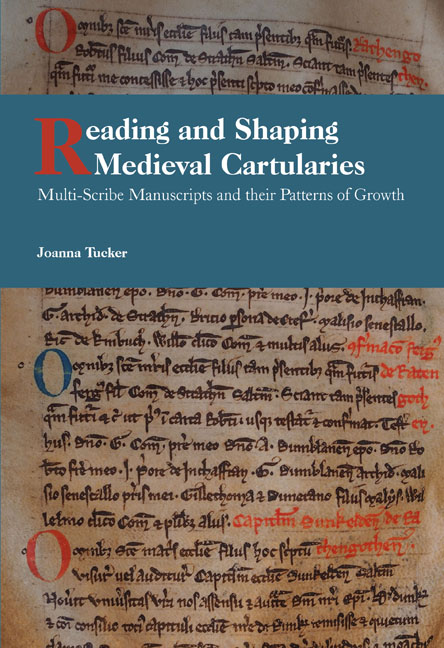Book contents
- Frontmatter
- Contents
- List of Plates
- List of Figures
- List of Tables
- Acknowledgements
- List of Abbreviations
- Conventions
- Introduction
- 1 Cartulary Studies
- 2 Analysing a Multi-Scribe Cartulary
- 3 The Creation and Growth of the Glasgow RV
- 4 The Creation and Growth of Lindores Caprington
- 5 Understanding the Patterns of Growth in Multi-Scribe Cartularies
- 6 Conclusion
- Appendix: Contents of the two Cartularies by ‘Series’
- Bibliography
- Index
- Studies in Celtic History
Appendix: Contents of the two Cartularies by ‘Series’
Published online by Cambridge University Press: 13 April 2021
- Frontmatter
- Contents
- List of Plates
- List of Figures
- List of Tables
- Acknowledgements
- List of Abbreviations
- Conventions
- Introduction
- 1 Cartulary Studies
- 2 Analysing a Multi-Scribe Cartulary
- 3 The Creation and Growth of the Glasgow RV
- 4 The Creation and Growth of Lindores Caprington
- 5 Understanding the Patterns of Growth in Multi-Scribe Cartularies
- 6 Conclusion
- Appendix: Contents of the two Cartularies by ‘Series’
- Bibliography
- Index
- Studies in Celtic History
Summary
Editorial principles
This appendix presents keys aspects of the two manuscripts studied here: the earliest cartularies of Glasgow Cathedral (AUL SCA MS JB 1/3) and Lindores Abbey (Ayrshire, Caprington Castle, Fergusson-Cuninghame Muniments). The purpose is to provide a summary, for ease of reference, of the results of the analysis of each cartulary's creation and growth in Chapter 3 (for Glasgow) and Chapter 4 (for Lindores), following the methodology established in Chapter 2. In keeping with this aim, only brief summaries of each text are given. Some of the terminology used in the tables will be summarised here.
Series. The manuscripts have been presented below by ‘series’ in the order in which they appear in the manuscript today, along with diagrams which illustrate their physical structure. The methodology for establishing the series is explained in Chapter 2.
Palaeographical dating. For each series, a note is made of the main conclusions of the palaeographical dating in Chapters 3 and 4. The notes are only a general guide; analysis of palaeographical dating criteria and comparators for individual scribes are given in the detailed discussion of each series in Chapters 3 and 4.
Scribes. Only the ‘numbered scribes’ in each manuscript are included below. This covers the vast majority of scribal activity in the two manuscripts but not every single contribution, as explained in Chapter 2. The material is presented as far as possible according to the order it appears in the manuscript today, reading the book from cover to cover. Occasionally, however, an attempt has been made to keep work together that was clearly part of a single, continuous effort. For example, where a scribe has added a large collection of texts covering many folios, these texts will appear as one block and any other contributions alongside or inserted within the collection will be listed at the end. It will also be recalled that the scribes have been numbered in order of their first appearance in the manuscript, and that some profiles appear in different places across the cartulary.
Folios. Folio references are to the most recent foliations.
Text. The summaries are based on a close reading of the original texts; if relevant, they have also been informed by the summaries of the text provided in PoMS.
- Type
- Chapter
- Information
- Reading and Shaping Medieval CartulariesMultiple Scribes and Patterns of Growth, pp. 229 - 286Publisher: Boydell & BrewerPrint publication year: 2021



